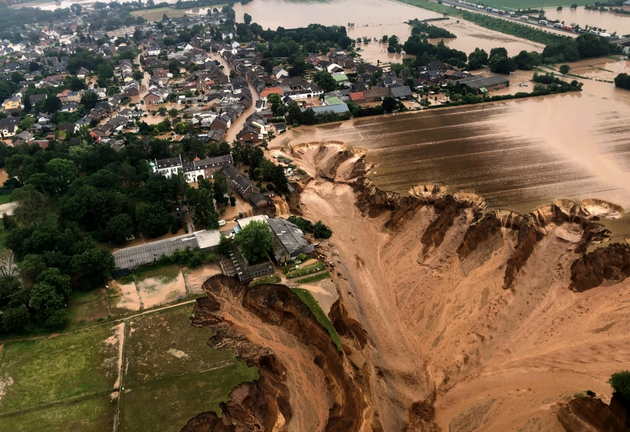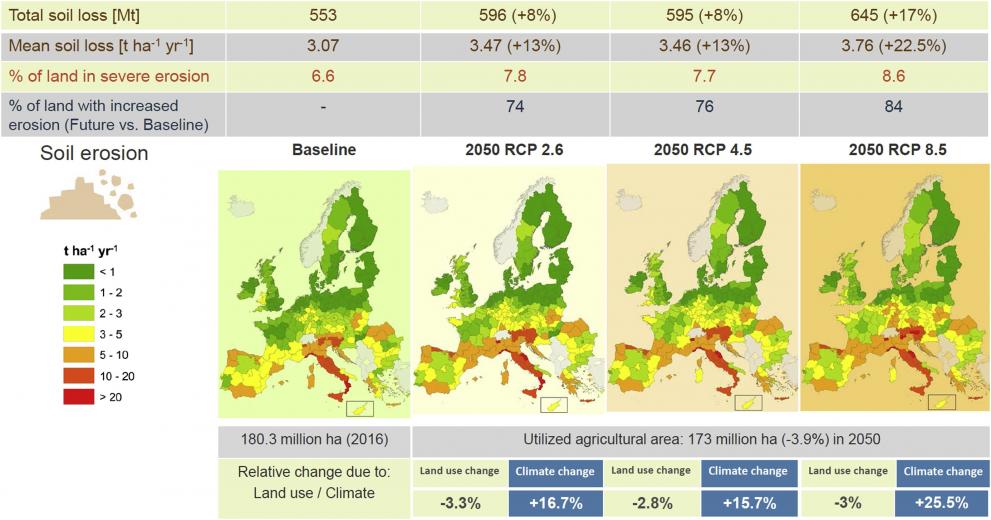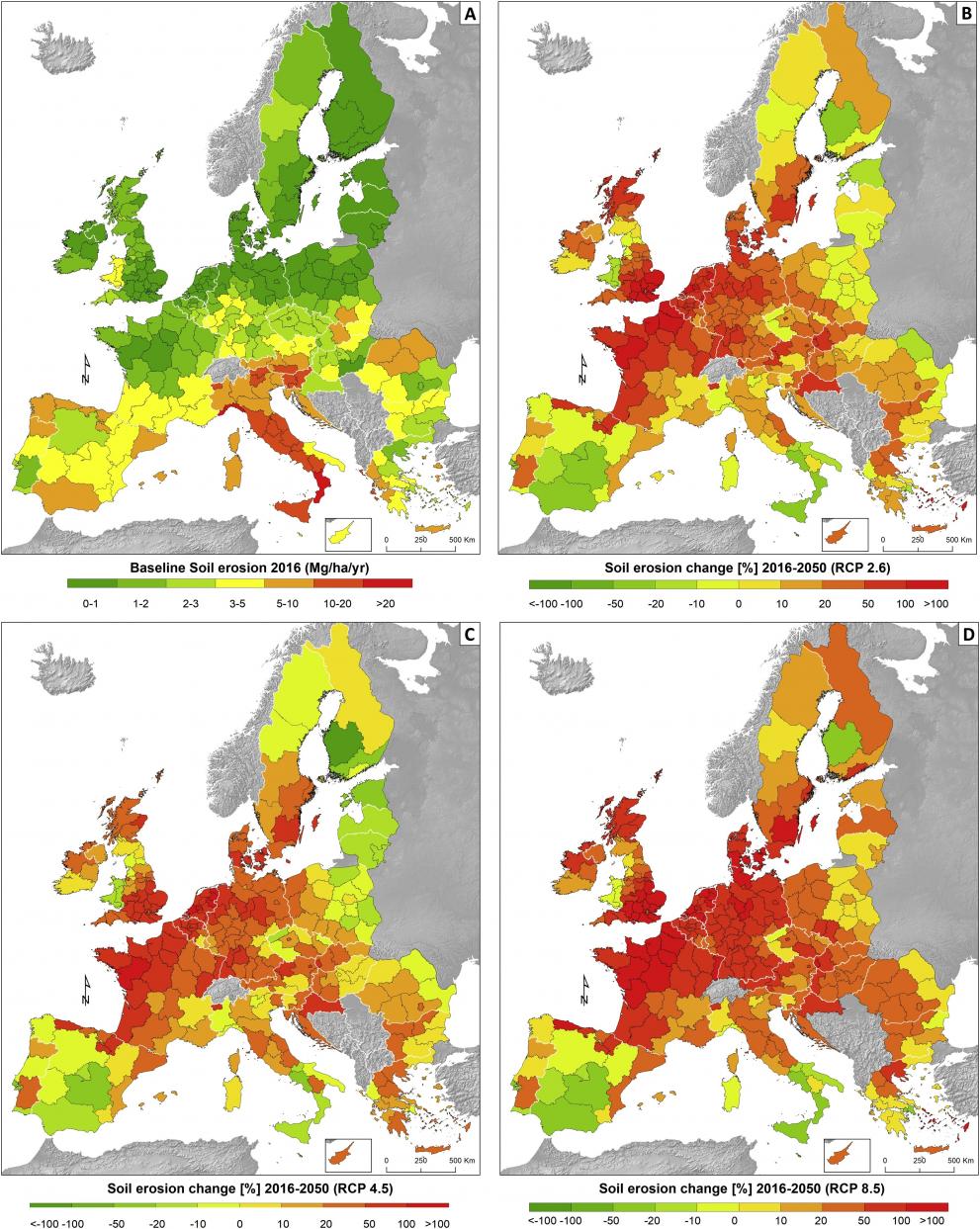
According to a recent JRC-led article, soil loss by water erosion is projected to increase by 13–22.5% in the EU and UK by 2050, mainly due to increased rainfall intensity.
This soil loss is expected to be greatest in central and northern Europe, which could see losses of up to 100% in some areas.
Soil erosion in southern Europe is projected to be largely unchanged due to a decline in precipitation patterns.
Future soil erosion driven by climate and land use change
The authors used 19 Global Climate Models and three different greenhouse gas concentration scenarios (Representative Concentration Pathways - RCPs) to project soil loss by water erosion in Europe by 2050.
They also used the JRC’s Common Agricultural Policy Regional Impact Analysis (CAPRI) model to simulate land use dynamics of the cropping sector in 2050 at the regional level.
They found that, although land use dynamics have a small positive effect (c.a. 3%) in erosion mitigation, mean soil loss due to water erosion could increase by 13–22.5% in agricultural areas of the EU and the UK by 2050.

In the baseline year (2016), about 3.07 tonnes of soil are lost per hectare of agricultural lands per annum.
Under the business-as-usual or least mitigation pathway scenario (RCP8.5), this is expected to increase to 3.76 tonnes by 2050.
The main driver for this change is the projected increase in rainfall intensity of 16-26%.
Greater impact on central/northern Europe
Mean soil losses in southern European countries are projected to either decrease (Spain) or remain as they are (Italy).
However, central and northern European regions could see significant increases in mean soil erosion, ranging from 10–50% (under RCP2.6) to 20–100 % (under the RCP8.5 scenario).

Climate change exacerbating soil erosion
The latest Intergovernmental Panel on Climate Change (IPCC) Assessment Report finds that climate change is widespread, rapid and intensifying.
It warns that rising global temperatures may substantially affect processes involved in desertification (water scarcity), land degradation (soil erosion, vegetation loss, wildfire, permafrost thaw) and food security (crop yield and food supply instabilities).
Under climate change projections, severe storms will become more intense, more topsoils will be lost due to higher levels of runoff, and water will be less able to infiltrate the soils of arable crops, which may cause even greater soil losses than at the beginning of this century.
Policy recommendations
The projected increase in soil loss can be avoided (or at least reduced) using targeted management practices and agro-environmental policy measures for soil conservation.
Based on a policy-relevant scenario analysis, the authors found that the most effective policy instrument is to link common agricultural policy (CAP) incentives to environmental performance in a targeted way.
Soil conservation measures such as cover crops and reduced tillage should be applied to at least 50% of soil erosion hotspots (land with soil erosion rates above 5 t/ha p.a.) to neutralise the future impact of climate change on water erosion.
The post-2020 CAP and other EU policy developments (EU Green Deal) may include a stronger soil conservation package with quantitative targets to mitigate the important increase in soil erosion i due to climate change in Europe.
Further information
- Projections of soil loss by water erosion in Europe by 2050
- IPCC Working Group I report, Climate Change 2021: the Physical Science Basis
- The new common agricultural policy: 2023-27
Related Content
Projections of soil loss by water erosion in Europe by 2050
IPCC Working Group I report, Climate Change 2021: the Physical Science Basis
Details
- Publication date
- 27 August 2021
